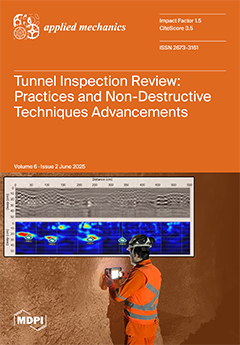Ultra-high-performance concrete (UHPC) has attracted considerable attention from both the construction industry and researchers due to its outstanding durability and exceptional mechanical properties, particularly its high compressive strength. Several factors influence the shear capacity of UHPC deep beams, including compressive strength, the shear
[...] Read more.
Ultra-high-performance concrete (UHPC) has attracted considerable attention from both the construction industry and researchers due to its outstanding durability and exceptional mechanical properties, particularly its high compressive strength. Several factors influence the shear capacity of UHPC deep beams, including compressive strength, the shear span-to-depth ratio (
λ), fiber content (
FC), vertical web reinforcement (
ρsv), horizontal web reinforcement (
ρsh), and longitudinal web reinforcement (
ρs). Considering these factors, this research proposes a novel hybrid algorithm that combines an adaptive neuro-fuzzy inference system (ANFIS) with an artificial neural network (ANN) to predict the shear capacity of UHPC deep beams. To achieve this, ANN and ANFIS algorithms were initially employed individually to predict the shear capacity of UHPC deep beams using available experimental data for training. Subsequently, a novel hybrid algorithm, integrating an ANN and ANFIS, was developed to enhance prediction accuracy by utilizing numerical data as input for training. To evaluate the accuracy of the algorithms, the performance metrics
R2 and
RMSE were selected. The research findings indicate that the accuracy of the ANN, ANFIS, and the hybrid ANN-ANFIS algorithm was observed as
R2 = 0.95,
R2 = 0.99, and
R2 = 0.90, respectively. This suggests that despite not using experimental data as input for training, the ANN-ANFIS algorithm accurately predicted the shear capacity of UHPC deep beams, achieving an accuracy of up to 90.90% and 94.74% relative to the ANFIS and ANN algorithms trained on experimental results. Finally, the shear capacity of UHPC deep beams predicted using the ANN, ANFIS, and the hybrid ANN-ANFIS algorithm was compared with the values calculated based on ACI 318-19. Subsequently, a novel reliability factor was proposed, enabling the prediction of the shear capacity of UHPC deep beams reinforced with fibers with a 0.66 safety margin compared to the experimental results. This indicates that the proposed model can be effectively employed in real-world design applications.
Full article





